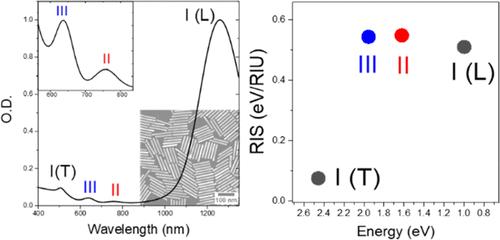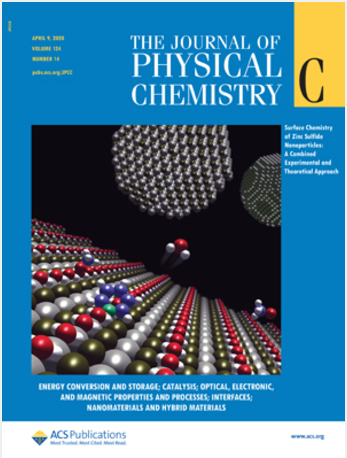Optical Sensitivity of Multipole Resonant Gold Nanorods in Solution and Film
IF 3.2
3区 化学
Q2 CHEMISTRY, PHYSICAL
引用次数: 0
Abstract
Ensembles of large aspect ratio gold rods (AuNRs) are of technological interest due to their extreme optical cross-section at visible and near-infrared wavelengths (C ∼ 104–105 nm2), ultrafast plasmonic and excitonic character (τ ∼ fs–ps), and responsivity to external fields affording ensemble alignment (ns−μs). With increasing aspect ratio and nanorod volume, plasmonic modes beyond dipolar emerge due to phase retardation. Such multipole resonances exhibit larger quality factors due to greater electromagnetic field localization, which is advantageous for optical signal routing, photon manipulation, or multistep processes such as second-harmonic generation, bioimaging, and photocatalysis. However, polydispersity of most as-synthesized AuNRs obscures these physicochemical behaviors across an ensemble, and thus at the macroscale. Herein, we present synthesis procedures for single-crystal AuNRs that simultaneously satisfy production scalability and ultralow dispersity with geometric tunability (aspect ratio:5 to 10; structural dispersity <0.1). Quadrupole and octupole resonances are observed in solutions and nanocomposite films with >10 nM AuNRs. The relationship between multipole resonance, aspect ratio, dielectric environment, temperature, and polarization agrees with theoretical predictions, confirming the foundation for the use of these effects in future technologies.

溶液和薄膜中多极共振金纳米棒的光学灵敏度
大长宽比金棒(AuNRs)的集合体具有极高的可见光和近红外波长光学截面(C ∼ 104-105 nm2)、超快的等离子和激子特性(τ ∼ fs-ps)以及对外部场的响应性(ns-μs),因而在技术上具有重要意义。随着高宽比和纳米棒体积的增加,由于相位延迟,出现了超越双极的等离子模式。这种多极共振由于更强的电磁场定位而表现出更大的品质因数,对于光信号路由、光子操纵或二次谐波产生、生物成像和光催化等多步过程非常有利。然而,大多数合成的 AuNRs 的多分散性掩盖了它们在整个集合体中的物理化学行为,因此在宏观尺度上也是如此。在此,我们介绍了单晶 AuNRs 的合成过程,它同时满足了生产可扩展性和超低分散性以及几何可调性(长宽比:5 到 10;结构分散性 <0.1)。在含有 10 nM AuNRs 的溶液和纳米复合薄膜中观察到了四极和八极共振。多极共振、长宽比、介质环境、温度和极化之间的关系与理论预测一致,为在未来技术中使用这些效应奠定了基础。
本文章由计算机程序翻译,如有差异,请以英文原文为准。
求助全文
约1分钟内获得全文
求助全文
来源期刊

The Journal of Physical Chemistry C
化学-材料科学:综合
CiteScore
6.50
自引率
8.10%
发文量
2047
审稿时长
1.8 months
期刊介绍:
The Journal of Physical Chemistry A/B/C is devoted to reporting new and original experimental and theoretical basic research of interest to physical chemists, biophysical chemists, and chemical physicists.
 求助内容:
求助内容: 应助结果提醒方式:
应助结果提醒方式:


